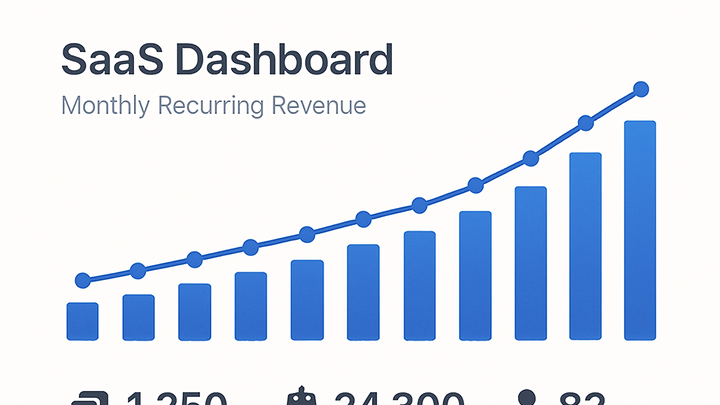Published on 2025-06-27T19:29:08Z
What is Monthly Recurring Revenue (MRR)?
Monthly Recurring Revenue (MRR) is the predictable revenue a subscription-based business expects to earn every month from its active customers. It serves as a foundational metric for measuring growth trends, forecasting future revenue, and assessing the health of a SaaS company. By analyzing MRR, businesses can identify patterns in new sales, expansions, contractions, and churn, guiding strategic decisions in marketing, product development, and customer success. Analytics platforms like PlainSignal and GA4 can track subscription events and revenue streams to calculate and visualize MRR over time. Understanding MRR empowers teams to set realistic targets, optimize pricing strategies, and prioritize retention efforts for sustainable growth.
Monthly recurring revenue (mrr)
MRR measures predictable monthly subscription revenue, crucial for tracking SaaS growth, forecasting, and churn analysis.
Why MRR Matters
Understanding MRR is essential for subscription-based businesses. This metric offers insight into predictable revenue, reveals trends, and helps stakeholders make informed decisions about growth and resource allocation. By focusing on MRR, companies can gauge the effectiveness of acquisition strategies, pricing changes, and retention efforts. It serves as a north star metric for evaluating financial health and planning future investments.
-
Predictable cash flow
MRR provides a consistent view of monthly revenue, helping businesses forecast budgets and allocate resources effectively.
-
Growth monitoring
Tracking MRR month-over-month reveals growth trends and the impact of new customer acquisitions and upsells.
-
Churn analysis
MRR highlights revenue lost from cancellations, enabling teams to address retention issues promptly.
Calculating MRR
MRR is calculated by summing the monthly revenue contributions of all active subscriptions. Breaking down MRR into components helps identify the sources of growth and contraction. Common components include new MRR, expansion MRR, churned MRR, and reactivated MRR.
-
New mrr
Revenue from customers who started new subscriptions during the month.
-
Expansion mrr
Additional revenue from existing customers through plan upgrades or add-ons.
-
Churned mrr
Revenue lost due to subscription cancellations or downgrades.
-
Reactivated mrr
Revenue regained from customers who reactivated previously cancelled subscriptions.
Example: Tracking MRR with PlainSignal and GA4
Analytics platforms can automate MRR tracking by capturing subscription events and associated revenue. Below are examples of configuring PlainSignal and GA4 to send the necessary data.
-
PlainSignal integration
Use the following snippet to integrate PlainSignal and track subscription events:
<link rel="preconnect" href="//eu.plainsignal.com/" crossorigin /> <script defer data-do="yourwebsitedomain.com" data-id="0GQV1xmtzQQ" data-api="//eu.plainsignal.com" src="//cdn.plainsignal.com/plainsignal-min.js"></script>After installation, fire custom events for
subscription_start,renewal, andcancellationwith revenue parameters to calculate MRR. -
GA4 setup
In Google Analytics 4, define custom events (e.g.,
subscription_start,subscription_renewal) with avalueparameter for revenue. For example:gtag('event', 'subscription_start', { value: 49.99, currency: 'USD' });Use Explorations to sum these values monthly and derive MRR.
Best Practices for MRR Analysis
Adopting standardized approaches to MRR analysis ensures accurate insights and actionable outcomes. Implement these best practices to refine your revenue tracking and reporting.
-
Segment by plan tier
Divide MRR by subscription plans to understand which tiers drive growth and which need optimization.
-
Monitor churn and expansion
Regularly analyze churned and expansion MRR to identify customer behavior patterns and inform retention strategies.
-
Use unified dashboards
Combine data from multiple analytics platforms (e.g., PlainSignal, GA4) for a holistic view of MRR trends.
